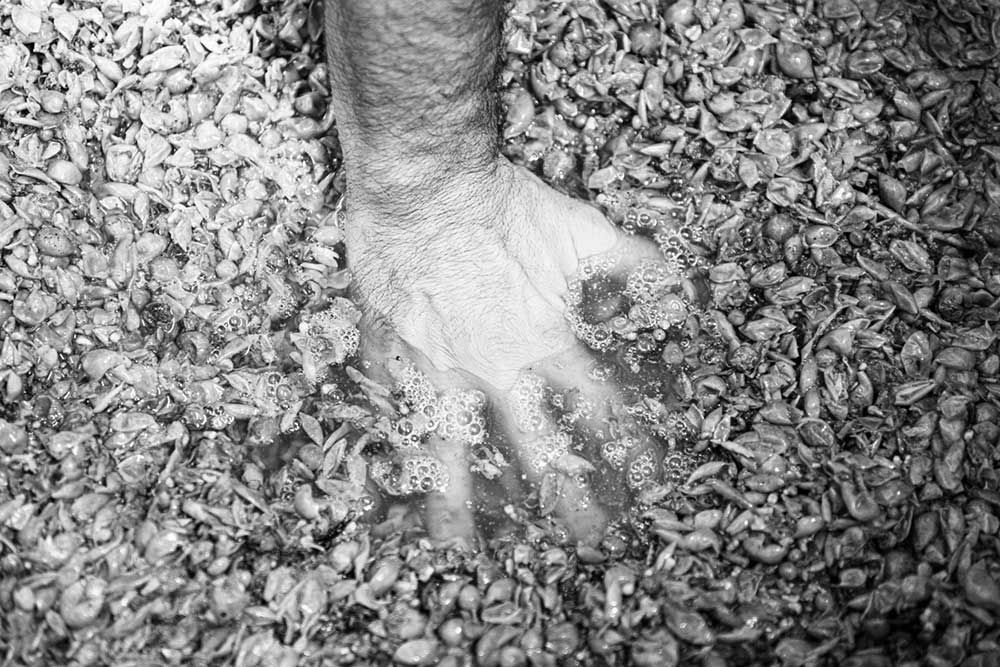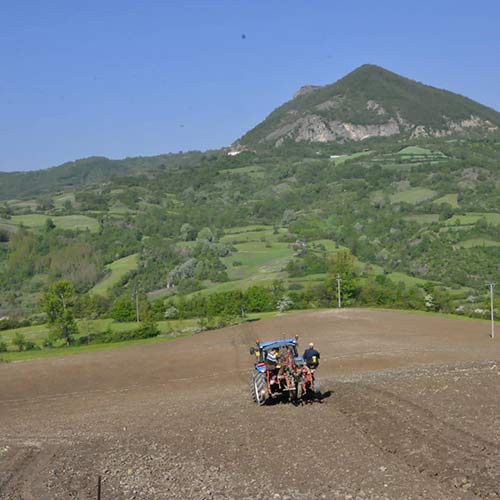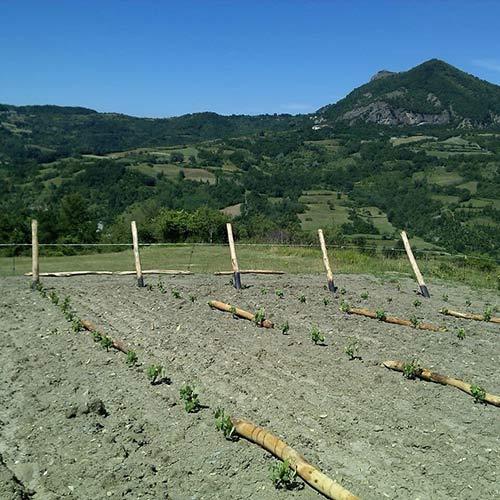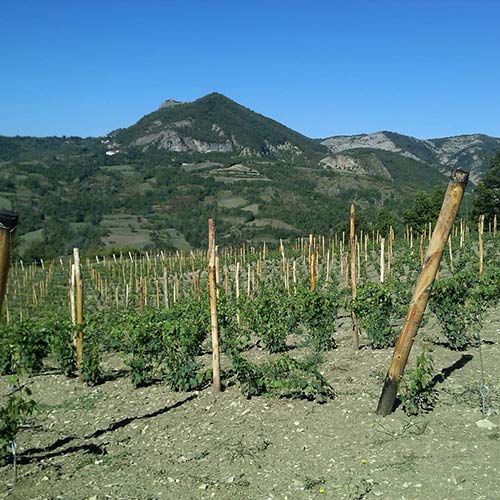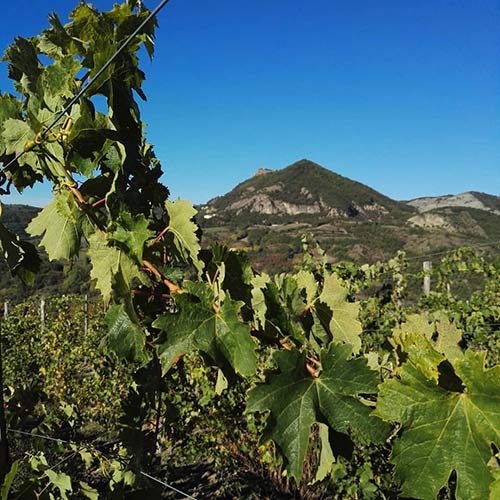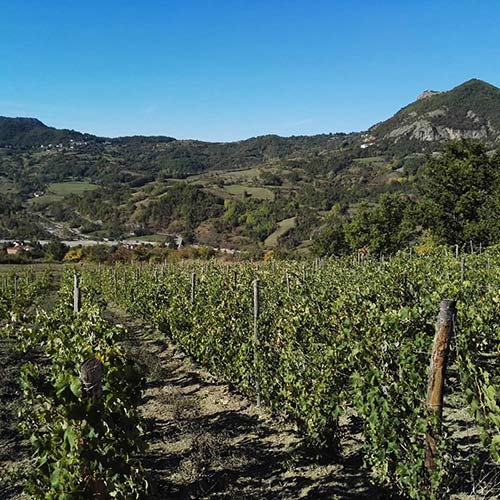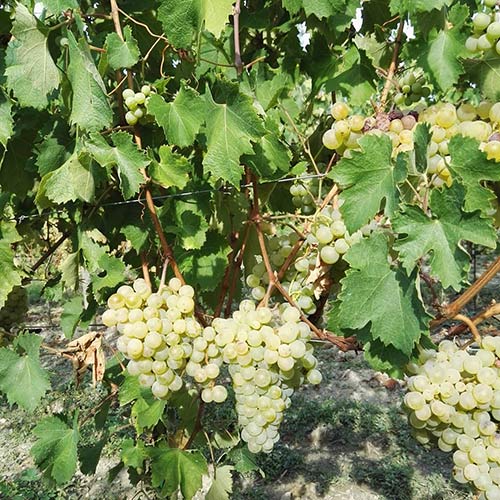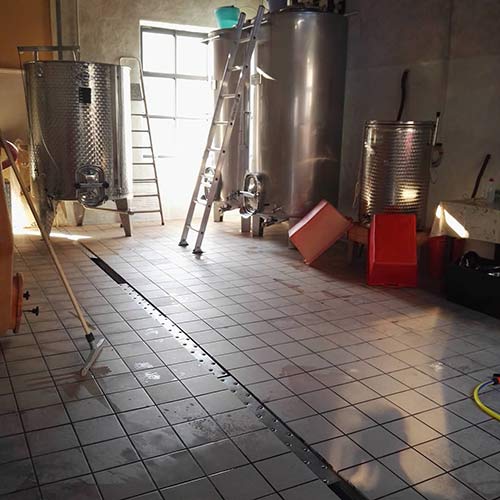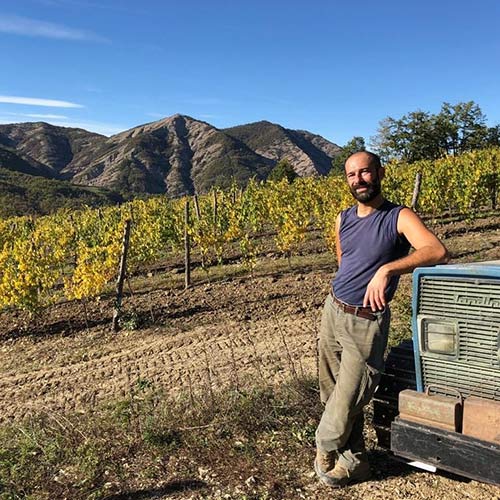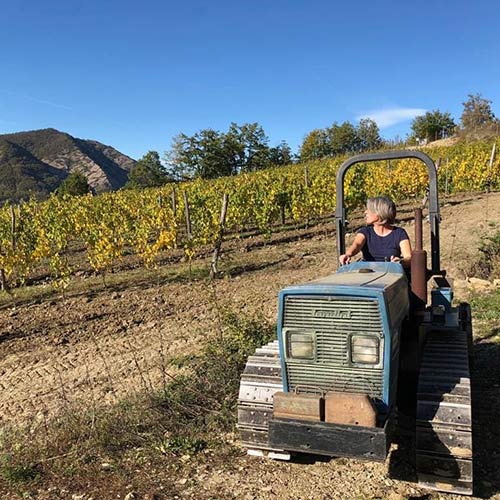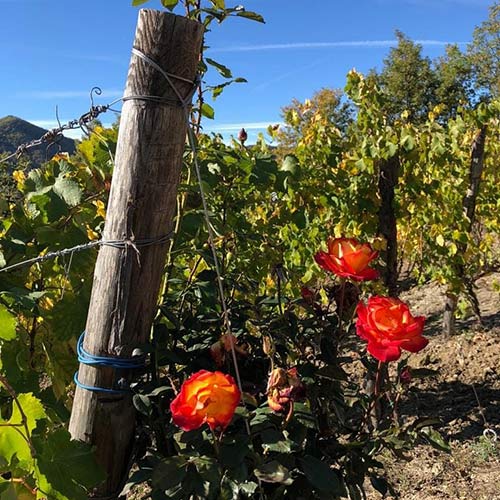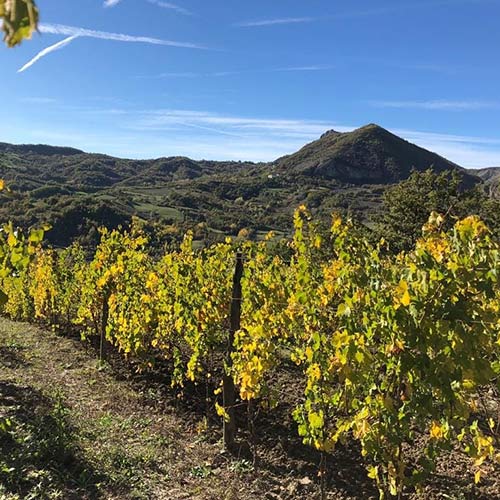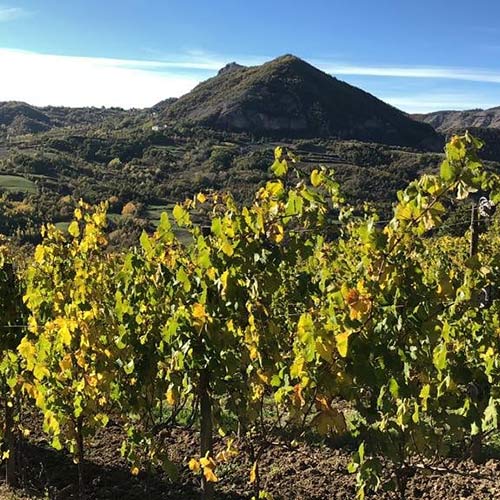Firm
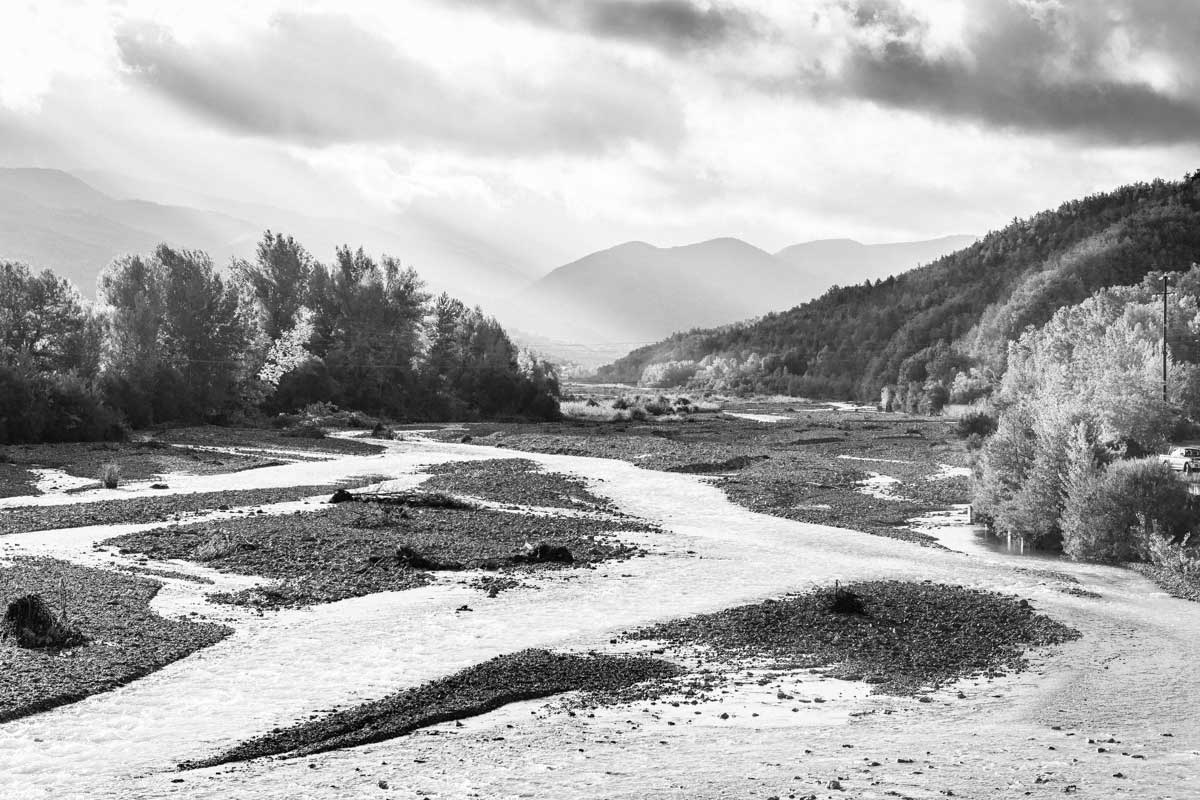
NEBRAIE was founded i n 2014 and is a family business.
In addition to the vine, we sow and harvest f orage hay, green manure legumes and ancient wheat. The project was born with t he idea of reviving a mountain territory by dedicating to the production and sale of wine in a place where in the past, until the depopulation started in the 60s of the twentieth century, the cultivation of the vine was widespread and in addition to the Timorasso were many varieties of vine, many of which were unknown.
The realization of the project was possible through a careful recovery of the family land, respecting the biodiversity and the basics of biodiversity and the principles of organic farming (company certified since 2019 and self-certified since birth).
The company is located in Val Borbera in the heart of the Ligurian Apennines but still in the province of Alessandria at an altitude between 450 and 600 meters above sea level.
The climate is characterized by cooler temperatures than the nearby hilly areas and by frequent thermal excursions. The area i s ventilated and very often the “marine wind” peeps out, bringing with it the mild temperatures of the sea. To promote biodiversity and life in all its forms, I host 30 hives of bees from a friendly company from which we obtain different types of honey: acacia, thyme, chestnut, wildflower. The company’s surface used as a vineyard is equal to 4 hectares, divided into 3 plots, one of which, NEBRAIE, gives the name to the farm.
The vine is the Timorasso, planted in clayey-loam soils, with a considerable presence of texture and moderately calcareous. What characterizes the Terroir is above all the presence in the subsoil of reddish-grey schists and of t he “Savignone” conglomerates, detrital masses consisting of clasts conglomerates, most of them made of rounded clasts of different sizes. Vineyards are all located between 500 and 600 meters above sea level and are exposed to south-west. Their disposition is a rettochino, the planting layout is 0.9 x 2.4 meters and the training system is Guyot.
The management of the land has a fundamental importance for me because in order to obtain a real and natural wine, it is necessary to keep alive the humus in the soil and preserve the biodiversity. I do this primarily through the distribution of organic manure pellets and the practice of green manure, that is, the sowing (in alternating rows) of legumes, self-produced ancient wheat and other naturally occurring essences. To these practices, in spring and summer, I combine the aeration/working of the soil of t he rows not sown. During the season, I periodically mow the inter-row with a chain mower that allows me to protect the soil from summer evaporation t hrough t he cover crop, a sort of mulch. I then mechanically work the under-row with a rotary inter-row mower both to cut the grass and to till the soil.
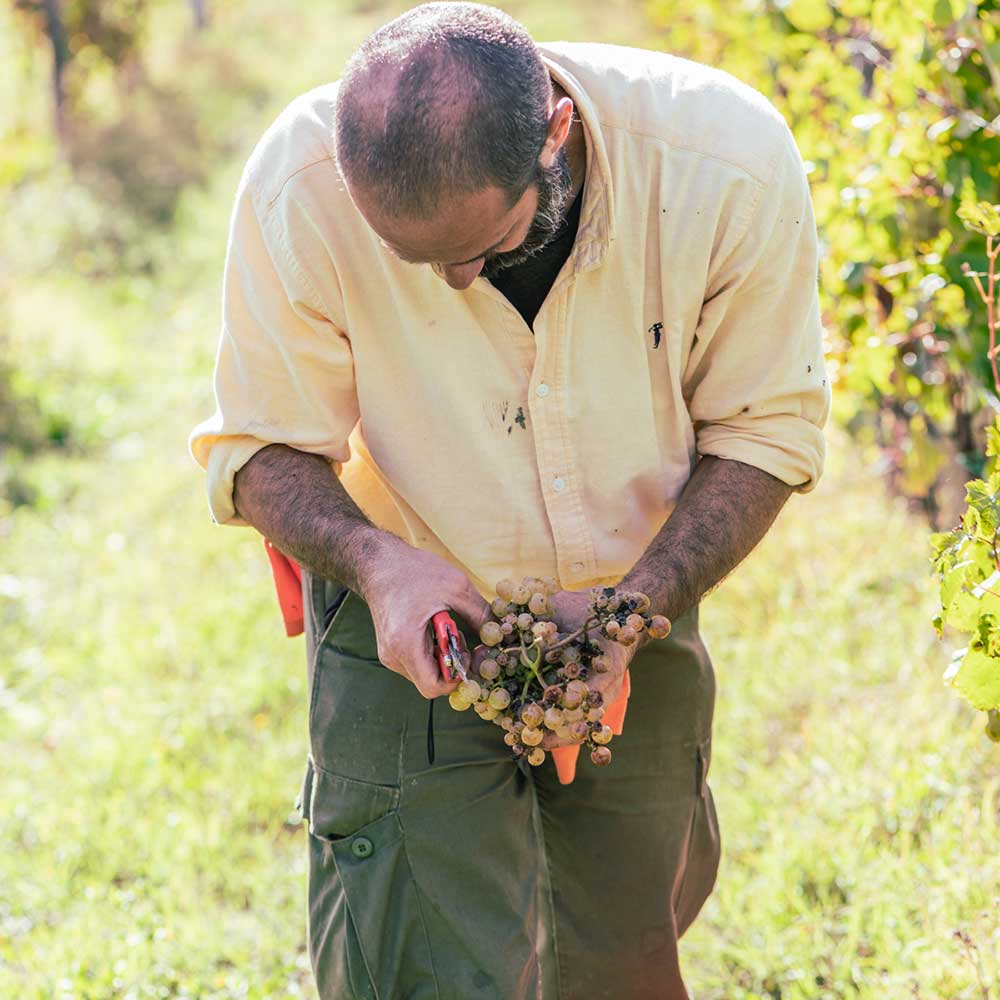
In addition to the soil, I pay great attention to the management of the plant, starting with the winter pruning: I apply the Simonit and Sirch method, that is a soft and branched pruning, that allows to give a better balance to the plant over time. The work continues in spring and summer with the green pruning, a word that expresses synthetically many and very important operations: the selection of the right number of shoots and their consequent scaffolding to the row, the stripping to aerate the area of the bunches and in pre-harvest to favor the ripening of the grapes.
During the growing season until the harvest I carry out a series of treatments of coverage with the atomizer consisting only of copper hydroxide and wettable sulfur, both in liquid form. While flavescence is by law kept at bay with pyrethrum. A few days before the harvesting of the grapes, I select some baskets of grapes to create the pied de cuve. Without this ancient technique, natural alcoholic fermentation would be left to chance, with many risks. The grapes are then mellowed. After a couple of days, the indigenous yeasts start the fermentation and usually in a week the must reaches full fermentation. We then proceed to the manual harvesting in boxes in the vineyard.
Trailer after trailer, I bring the grapes to the cellar where they are subjected to a soft direct pressing to maintain the freshness and integrity of the grapes. The must obtained ends up in steel tanks where if necessary I have the possibility to control the fermentation temperature.
The fermentation takes place with indigenous yeasts and after a few days from its start I add the must in full fermentation of the pied de cuve. At the end of fermentation I make a racking in order to keep only the fine lees and, if the vintage requires it, I add sulfur dioxide.
From this moment on, the wine is aged on the lees until the last racking before bottling. The wine is not filtered and doesn’t undergo any oenological practice.
